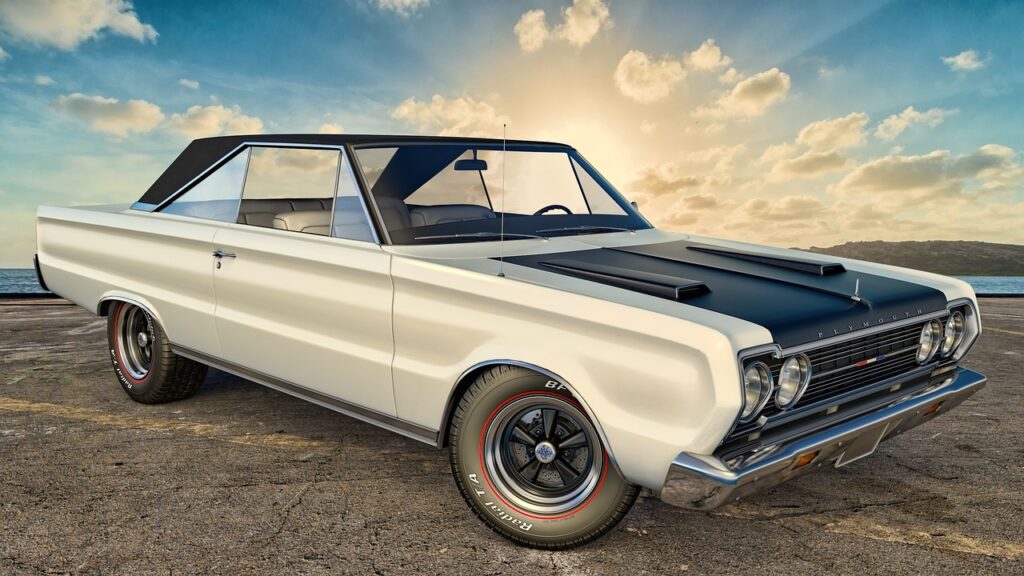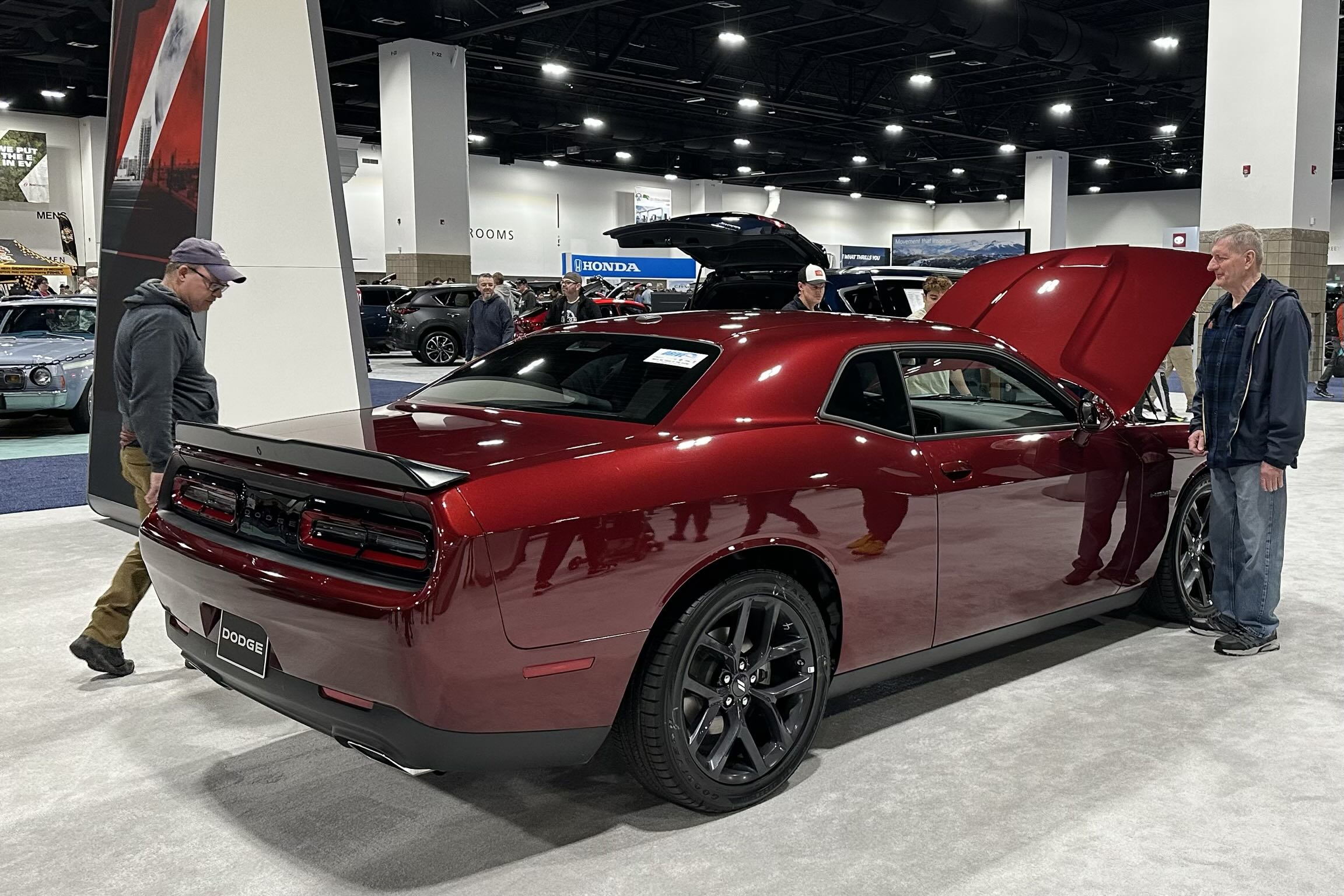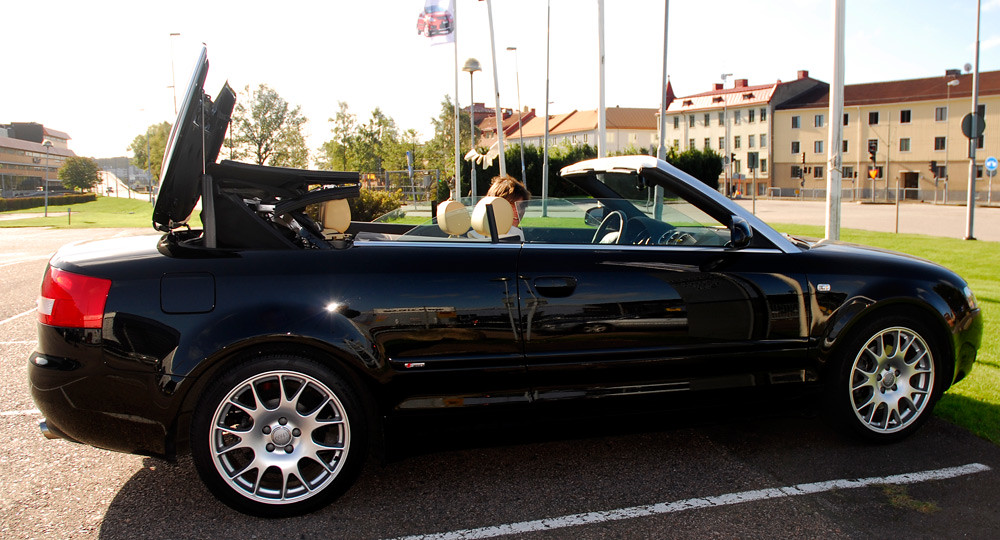
Hollywood has a magical way of turning the ordinary into the extraordinary, especially when it comes to cars. We’ve all seen those sleek, super-fast vehicles that zoom across the big screen, making us swoon, but sometimes, it’s the quirky, the modified, or the just plain *unusual* rides that truly steal the show. And when you add some of our favorite comedic talents into the driver’s seat? That’s when cinematic alchemy really happens, turning everyday vehicles into four-wheeled legends that live rent-free in our heads.
Forget about hypercars and custom builds designed for the red carpet. We’re talking about the vehicles that became co-stars, comedic foils, and unforgettable icons, often outshining the very humans behind the wheel. From time-traveling sports cars to ghost-busting ambulances and even family wagons built for laughs, these are the machines that rolled onto film sets and into our hearts, all thanks to the brilliant comedians who brought them to life. They might not be what you’d expect from a list of “coolest movie cars,” but trust us, their stories are anything but ordinary.
So, buckle up, gearheads and film buffs! We’re about to take a spin through the most unexpected automotive icons that graced the silver screen, driven by some of the funniest people to ever hit Hollywood. Get ready for a hilarious journey down memory lane, celebrating the vehicles that proved sometimes, the weirdest rides make for the best laughs and the most enduring legacies.

1. **The DeLorean DMC-12 in “Back to the Future”**When you think “time machine,” what’s the first image that pops into your head? For millions around the globe, it’s not some abstract concept or a clunky, steampunk device, but the sleek, stainless-steel-clad DeLorean DMC-12. This car, with its iconic gull-wing doors, wasn’t exactly flying off dealership lots when it first arrived. It was more about futuristic looks than groundbreaking performance, making it a rather quirky, almost underdog choice for any kind of stardom. Little did anyone know, this automotive oddball was about to get the ultimate Hollywood glow-up.
The magic truly happened when “Back to the Future” hit theaters, forever cementing the DeLorean’s place in pop culture history. Suddenly, this car, which had been a bit of a commercial flop, was transformed into the ultimate vehicle for cinematic adventure. It wasn’t just a car anymore; it was a conduit for paradoxes, a vessel for thrilling escapes, and the very key to understanding why we should *never* mess with the space-time continuum. Thanks to the film’s ingenious plot and the unforgettable duo of Michael J. Fox’s Marty McFly and Christopher Lloyd’s Doc Brown, the DeLorean became an instant, unexpected celebrity.
It turns out that the choice of the DeLorean for this pivotal role was almost a happy accident, as ComicBook reveals. The film’s creators needed a car that genuinely looked like it could transport you through time, and the DeLorean’s distinctive, ahead-of-its-time design fit the bill perfectly. Its brief production run suddenly became part of its mystique, adding to its legend. Today, seeing a DeLorean at a car show or pop culture convention isn’t about appreciating its engine — it’s about celebrating its incredible cinematic legacy. It’s a true testament to how timing, and a brilliant script, can turn an ordinary car into an extraordinary legend.
Car Model Information: 1982 Delorean DMC-12
Name: DMC DeLorean
Alt: 1983 DeLorean
Caption: 1983 DeLorean
Manufacturer: DeLorean Motor Company
Production: January 21, 1981 – December 1982
ModelYears: 1981–1983
Assembly: Dunmurry
Designer: Giorgetto Giugiaro
Class: Sports car
BodyStyle: coupé
Layout: Rear-engine, rear-wheel-drive layout
Doors: Gull-wing doors
Engine: 2.85 L
Abbr: on
Powerout: 130 hp
Transmission: 5-speed manual ,3-speed automatic
Wheelbase: 2413 mm
Length: 4267 mm
Width: 1988 mm
Height: 1140 mm
Weight: 1233 kg
Sp: us
Categories: 1980s cars, All Wikipedia articles written in American English, Articles with short description, Automobiles with backbone chassis, Automobiles with gull-wing doors
Summary: The DMC DeLorean is a rear-engine, two-seat sports car manufactured and marketed by John DeLorean’s DeLorean Motor Company (DMC) for the American market from 1981 until 1983—ultimately the only car brought to market by the fledgling company. The DeLorean is sometimes referred to by its internal DMC pre-production designation, DMC-12, although this was not used in sales or marketing materials for the production model.
Designed by Giorgetto Giugiaro, the DeLorean is noted for its gull-wing doors and brushed stainless-steel outer body panels, as well as its lack of power and performance. Though its production was short-lived, the DeLorean became widely known after it was featured as the time machine in the Back to the Future films.
With the first production car completed on January 21, 1981, the design incorporated numerous minor revisions to the hood, wheels and interior before production ended in late December 1982, shortly after DMC filed for bankruptcy and after total production reached an estimated 9,000 units.
Despite the car having a reputation for poor build quality and an unsatisfactory driving experience, the DeLorean continues to have a strong following, driven in part by the popularity of Back to the Future. 6,500 DeLoreans were estimated to still be on the road as of 2015.
Get more information about: DMC DeLorean
Buying a high-performing used car >>>
Brand: DeLorean Model: DMC-12
Price: $129,950 Mileage: 3,145 mi.
Read more about: From Showroom Shame to Collector’s Dream: The Flops That Became Automotive Icons

2. **The Pontiac Trans Am in “Smokey and the Bandit”**Before a certain charming outlaw named Bandit sped onto the scene, the Pontiac Trans Am was a respectable muscle car, sure, but it wasn’t exactly a household name. Then came Burt Reynolds, his iconic mustache, and a whole lot of high-speed shenanigans, and everything changed. The moment that glossy black and gold Trans Am roared across the screen in “Smokey and the Bandit,” it wasn’t just a car anymore; it was an instant symbol of pure, unadulterated rebellion and fun. This ride wasn’t just outrunning the law; it was capturing the imaginations of an entire nation.
The film’s runaway success ignited a passion for the Trans Am that was nothing short of phenomenal. As Motor Junkie pointed out, everyone suddenly wanted a piece of that “Bandit” lifestyle, leading to a massive surge in sales. Its sleek lines, the effortlessly cool T-top roof, and that undeniable roar of a V8 engine made it the perfect accomplice for Burt Reynolds’s charismatic, law-bending character. This wasn’t a mere background prop; it was a co-star, sharing every exhilarating moment and every spotlight with the movie’s leading man.
To this day, the Bandit’s Trans Am continues to hold a revered spot in pop culture, a true icon of 1970s cool. Whether you spot it as a meticulously crafted die-cast model on a shelf or hear its name dropped in casual conversation, its legendary status is undeniable. This car’s journey from a solid, if not spectacular, muscle car to a full-blown cinematic legend is a prime example of cinematic alchemy, proving that the right role can transform a vehicle into an everlasting icon. You just know you want one, don’t you?
Car Model Information: 2022 Lincoln Aviator Reserve AWD
Name: Pontiac Firebird
Caption: The second, third, and fourth generations of,the Pontiac Firebird Trans Am
Manufacturer: Pontiac (automobile)
Production: February 23, 1967 – August 30, 2002
ModelYears: 1967 – 2002
Class: Pony car,Muscle car
Platform: GM F platform
Related: Chevrolet Camaro
Layout: Front engine, rear-wheel-drive layout
Categories: 1970s cars, 1980s cars, 1990s cars, 2000s cars, All articles with dead external links
Summary: The Pontiac Firebird is an American automobile built and produced by Pontiac from the 1967 to 2002 model years. Designed as a pony car to compete with the Ford Mustang, it was introduced on February 23, 1967, five months after GM’s Chevrolet division’s platform-sharing Camaro. This also coincided with the release of the 1967 Mercury Cougar, Ford’s upscale, platform-sharing version of the Mustang.
The name “Firebird” was also previously used by GM for the General Motors Firebird series of concept cars in the 1950s.
Get more information about: Pontiac Firebird
Buying a high-performing used car >>>
Brand: Pontiac Model: Trans Am
Price: $39,000 Mileage: 66,933 mi.
Read more about: Gear Up for Glory: 15 Unforgettable Rides That Defined the Legendary 1970s Automotive Scene

3. **The 1974 Dodge Monaco “Bluesmobile” in “The Blues Brothers”**Before Jake and Elwood Blues got their hands on it, the 1974 Dodge Monaco was just another retired police cruiser, probably destined for a quiet life in a junkyard or a low-budget taxi service. But then “The Blues Brothers” rolled into town, and this battered, boxy sedan was resurrected as the legendary “Bluesmobile,” instantly earning its place in cinematic history, as Slash Gear so aptly noted. This wasn’t just a car; it was a comedic force of nature, a rolling punchline that somehow endured more crashes, jumps, and general vehicular mayhem than any car reasonably should.
What truly made the Monaco shine, beyond its unassuming exterior, was its astonishing resilience. It seemed to laugh in the face of logic, plowing through shopping malls with reckless abandon, leaping over bridges with improbable grace, and somehow, against all odds, surviving every single outrageous stunt thrown its way. The car wasn’t just a prop; it was a full-fledged comedic partner to Dan Aykroyd’s Elwood and John Belushi’s Jake, with a deadpan ability to take a beating and keep on rolling, mission unaccomplished… or so it seemed. As Elwood himself famously declared, it had “a cop motor… cop tires, cop suspensions, cop shocks!” – and boy, did it prove it.
Even today, a replica Bluesmobile, complete with its tell-tale oversized speakers and gloriously battered paint job, is a surefire hit at any car event, instantly conjuring memories of madcap mayhem and classic comedic genius. The Monaco’s incredible transformation from a forgotten police cruiser to a beloved cult classic is a powerful testament to the sheer personality a movie can infuse into a vehicle. It’s proof that sometimes, the most unassuming rides can become the biggest stars, especially when driven by musical-comedy legends on a mission from God. Just don’t forget to fix that lighter!
Car Model Information: 2021 Dodge Durango SRT Hellcat
Name: Dodge Monaco
Caption: 1968 Dodge Monaco four-door hardtop
Manufacturer: Dodge
Related: Dodge Polara
ModelYears: 1965–1977 (full-size),1977–1978 (intermediate) , 1990–1992 (full-size)
Predecessor: Dodge Custom 880
Successor: Dodge St. Regis
Categories: 1970s cars, 1990s cars, All articles needing additional references, All articles that may contain original research, All articles with unsourced statements
Summary: The Dodge Monaco is an automobile that was marketed by the Dodge division of Chrysler Corporation. Introduced as the flagship of the Dodge product line, the Monaco was introduced for the 1965 model year to replace the Custom 880, then later joined as a sub-model of the Dodge Polara. During its production, the Monaco was offered in several body configurations, including two-door and four-door hardtop sedans, four-door sedans, two-door convertibles, and station wagons.
From 1965 to 1977, three generations of the Monaco were produced with the full-size Chrysler C platform. For 1977 and 1978, Dodge shifted the Monaco to the intermediate Chrysler B platform, effectively downsizing the model line. For 1979, the model line was redesigned and renamed the Dodge St. Regis.
After a 12-year hiatus, the full-size Monaco was revived for the 1990 model year as the flagship Dodge sedan, replacing the Diplomat. This was a rebadged version of the Eagle Premier which was developed by Renault and American Motors Corporation (AMC). The Monaco was replaced by the Dodge Intrepid for the 1993 model year.
It is named after the Principality of Monaco.
Get more information about: Dodge Monaco
Buying a high-performing used car >>>
Brand: DODGE Model: MONACO
Price: $59,795 Mileage: 29,236 mi.

4. **The Cadillac Miller-Meteor “Ecto-1” in “Ghostbusters”**Imagine a vehicle that started its life as a somber ambulance and hearse. Not exactly the typical blueprint for Hollywood stardom, right? Well, the 1959 Cadillac Miller-Meteor Sentinel defied all expectations when it underwent a spectacular transformation into the legendary Ecto-1 for the “Ghostbusters” franchise. Suddenly, this once-utilitarian machine, with its majestic fins, blaring sirens, and a delightful array of ghost-busting gadgets, wasn’t just transportation for Bill Murray’s Peter Venkman, Dan Aykroyd’s Ray Stantz, and the rest of the crew; it became an iconic character in its own right, beloved by fans worldwide.
The genius of the Ecto-1 lay in its perfectly quirky, retro aesthetic, which flawlessly complemented the film’s unique blend of hilarious comedy and thrilling supernatural adventure. It wasn’t about raw speed or traditional flashiness; it was about personality, practicality, and ample storage for proton packs. The Ecto-1 proved, without a shadow of a doubt, that even the most unlikely and unconventional vehicles can ascend to superstardom with the right script and a touch of Hollywood magic. It redefined what a hero car could be, proving that functionality mixed with pure eccentricity is often far more memorable than sleek aerodynamics.
Today, the Ecto-1 remains one of those rare vehicles that are instantly recognizable, whether you spot a replica at a fan convention or a meticulously preserved version in a museum. Its cinematic legacy continues to captivate and thrill generations of both car aficionados and movie enthusiasts alike, making it clear that few vehicles have ever held such an enduring and charming presence in the collective pop culture consciousness. It’s not just a car; it’s a legend, and one cool station wagon, indeed!
Car Model Information: 2022 Lincoln Aviator Reserve AWD
Name: Ecto-1
Series: Ghostbusters (franchise)
Caption: One of the Ecto-1s used during the filming of Ghostbusters (1984) stored in the Sony Archive
FirstMajor: Ghostbusters
FirstDate: Sat Dec 31 1983 16:00:00 GMT-0800 (Pacific Standard Time)
Creator: Dan Aykroyd,Harold Ramis
Affiliation: Ghostbusters
Type: Automobile
Power: Gasoline
Categories: All articles lacking reliable references, Art vehicles, Articles lacking reliable references from December 2017, Articles with short description, Commons category link is on Wikidata
Summary: The Ecto-1 (also known as the Ectomobile) is a fictional vehicle from the Ghostbusters franchise. It appears in the films Ghostbusters (1984), Ghostbusters II (1989), Ghostbusters (2016), Ghostbusters: Afterlife (2021), Ghostbusters: Frozen Empire (2024), in the animated television series: The Real Ghostbusters and Extreme Ghostbusters, and in the video games Ghostbusters: The Video Game and Ghostbusters: Spirits Unleashed.
Get more information about: Ectomobile
Buying a high-performing used car >>>
Brand: Cadillac Model: Miller-Meteor Sentinel
Price: $39,000 Mileage: 66,933 mi.

5. **The Lincoln Futura “Batmobile” in the 1960s “Batman” TV series**Before it became the iconic crime-fighting machine of Gotham City, the Lincoln Futura was just a futuristic concept car, an ambitious design study that never quite made it to mass production. But in a stroke of genius, Hollywood rescued this automotive marvel, transforming it into the legendary Batmobile for the flamboyant 1960s “Batman” TV series. With its unmistakable bubble canopy, dramatically exaggerated fins, and an interior positively brimming with high-tech gadgets, this Batmobile wasn’t just a car; it was a pop culture phenomenon, instantly recognizable to anyone who’s ever hummed the iconic theme tune.
The Futura’s outlandish, one-of-a-kind design was an absolutely perfect match for the delightfully campy and color-saturated world of Adam West’s Batman and Burt Ward’s Robin. This was more than just a means of transportation for the Caped Crusader; it was a rolling arsenal, meticulously packed with everything a crime-fighter could ever need, from indispensable Batphones to cleverly deployed smoke screens. The car’s truly unique look and its captivating presence on screen ensured that it became a star in its own right, practically a third member of the Dynamic Duo.
Decades later, the 1960s Batmobile continues to steal the show at conventions and exhibitions, where countless replicas showcase its dramatic styling and undeniable superhero flair. It stands as a powerful reminder that sometimes, the most memorable vehicles aren’t born on the production line, but in the imaginative minds of Hollywood designers, bringing a sense of pure, unadulterated fun and spectacle to our screens. It’s a testament to the power of a great concept car finding its true calling as a symbol of justice, Bat-style!

6. **The Oldsmobile Vista Cruiser in “That ’70s Show”**Ah, the Oldsmobile Vista Cruiser. For many, this station wagon was the very embodiment of suburban family life in the 1970s – complete with the quintessential wood paneling and a promise of space for kids, groceries, and perhaps a golden retriever. Yet, this unassuming vehicle found an entirely new lease on life, transforming into a cultural touchstone as the beloved Forman family’s ride in “That ’70s Show.” It wasn’t just a car; it was the silent witness to countless teenage adventures, whispered heart-to-hearts, and, famously, the hazy, hilarious “circle” scenes that defined a generation of sitcom viewing.
With its unmistakable retro charm, the Vista Cruiser’s spacious interior and classic wood-paneled exterior made it the absolute perfect vessel for Eric Forman and his gang of friends as they navigated the awkward, hilarious, and often smoke-filled journey of growing up in suburban Wisconsin. Its unpretentious style perfectly captured the show’s nostalgic, affectionate portrayal of the 70s, elevating this humble family wagon from mere transportation to a powerful symbol of coming-of-age and adolescent freedom. It was the mobile HQ for mischief and camaraderie, a rolling icon of an era.
To this day, the sight of an Oldsmobile Vista Cruiser at a classic car meet is guaranteed to spark a wave of nostalgia. It instantly evokes a flood of fond memories, not just of the iconic sitcom itself, but of the entire era it so brilliantly celebrated. This car proves that you don’t need gull-wing doors or a turbo boost to become an unforgettable part of pop culture; sometimes, all you need is a comfy back seat, a group of hilarious friends, and a whole lot of ’70s vibes to etch yourself into television history.
Car Model Information: 2022 Lincoln Aviator Reserve AWD
Name: Oldsmobile Vista Cruiser
Layout: FR layout
Manufacturer: Oldsmobile
ModelYears: 1964–1977
Related: Chevrolet Chevelle,Pontiac Tempest#Second generation (1964–1967),Buick Sport Wagon
Caption: 1966 Oldsmobile Vista Cruiser
Class: Mid-size
Chassis: body on frame
BodyStyle: Station Wagon
Successor: Oldsmobile Cutlass Supreme#Fourth generation (1978–1988)
Platform: GM A platform (RWD)
Categories: 1960s cars, 1970s cars, Articles with short description, Cars discontinued in 1977, Cars introduced in 1964
Summary: The Oldsmobile Vista Cruiser is a station wagon manufactured and marketed by Oldsmobile over three generations from 1964 to 1977.
The first and second generation Vista Cruisers are noted for their fixed-glass, roof-mounted skylights over the second-row seating with sun visors for the second row passengers, a raised roof behind the skylight and lateral glass panels over the rear cargo area along the raised roof, and access to the third row of forward-facing passenger seating was accomplished by a second row split bench seat that retracted forward.
Sharing its bodystyle with the Buick Sport Wagon, Pontiac Tempest Safari and Chevrolet Chevelle Greenbrier, the Vista Cruiser was introduced on February 4, 1964, as a 1964 model, based on the Oldsmobile Cutlass/F-85 Series. The skylight roof panel was only shared with the Buick Sport Wagon and was not available on the Chevrolet Chevelle or Pontiac Tempest station wagons. Prior to the 1973 model year the Vista Cruiser utilized a wheelbase which was 5 inches (127 mm) longer than that of the Cutlass/F-85 sedan.
Subsequent Oldsmobile mid-size wagons featured a skylight as did the 1991–92 full-size Oldsmobile Custom Cruiser wagon and the 1991–96 Buick Roadmaster Estate.
Reminiscent of earlier models, the third generation Vista Cruiser (1973–1977) featured optional rear-facing third row seating, while incorporating a single flat venting moonroof over the front row seating.
Get more information about: Oldsmobile Vista Cruiser
Buying a high-performing used car >>>
Brand: Oldsmobile Model: Vista Cruiser
Price: $39,000 Mileage: 66,933 mi.

7. **The Ford LTD Country Squire “Wagon Queen Family Truckster” in “National Lampoon’s Vacation”**If there was ever a vehicle designed to epitomize the suburban family road trip, it was the Ford LTD Country Squire, a seemingly innocent station wagon. But leave it to the comedic genius of “National Lampoon’s Vacation” and Chevy Chase’s Clark Griswold to take this wholesome family hauler and transform it into an unforgettable, side-splitting legend: the infamous “Wagon Queen Family Truckster.” This wasn’t just any Country Squire; it was a heavily modified, custom creation, adorned with excessive wood paneling and a collection of design choices so questionable, they were pure comedic gold.
The Truckster’s wildly over-the-top appearance was deliberately crafted for laughs, a visual punchline in itself. Yet, beneath the absurdity, it perfectly mirrored the chaotic, unpredictable, and utterly hilarious nature of the Griswold family’s ill-fated cross-country adventure. Every dent, every weird appendage, every gaudy detail of the Truckster became a central character in the film’s charm, its misadventures intertwined with the family’s own. It wasn’t just transportation; it was a symbol of an American family’s doomed pursuit of the perfect vacation, delivering laughs at every turn of the wheel.
Decades after its debut, the Wagon Queen Family Truckster continues to elicit smiles, chuckles, and knowing nods. Whenever a replica rolls by at parades or events, it serves as a joyous, rolling reminder of the Griswolds’ hilarious misadventures, instantly transporting viewers back to that iconic journey to Wally World. This unusual vehicle truly cemented its place as one of the most memorable movie cars of all time, proving that sometimes, the most outrageously ugly cars can be the most beautiful examples of comedic brilliance.
The cinematic joyride continues! In this second section, we’ll shift gears to spotlight seven more outrageously cool and unusual vehicles that played pivotal parts in the comedic adventures of Hollywood’s funniest. From animated classics to high-octane action-comedies, discover how these four-wheeled (and sometimes six-wheeled!) wonders left an indelible mark on pop culture and our hearts.
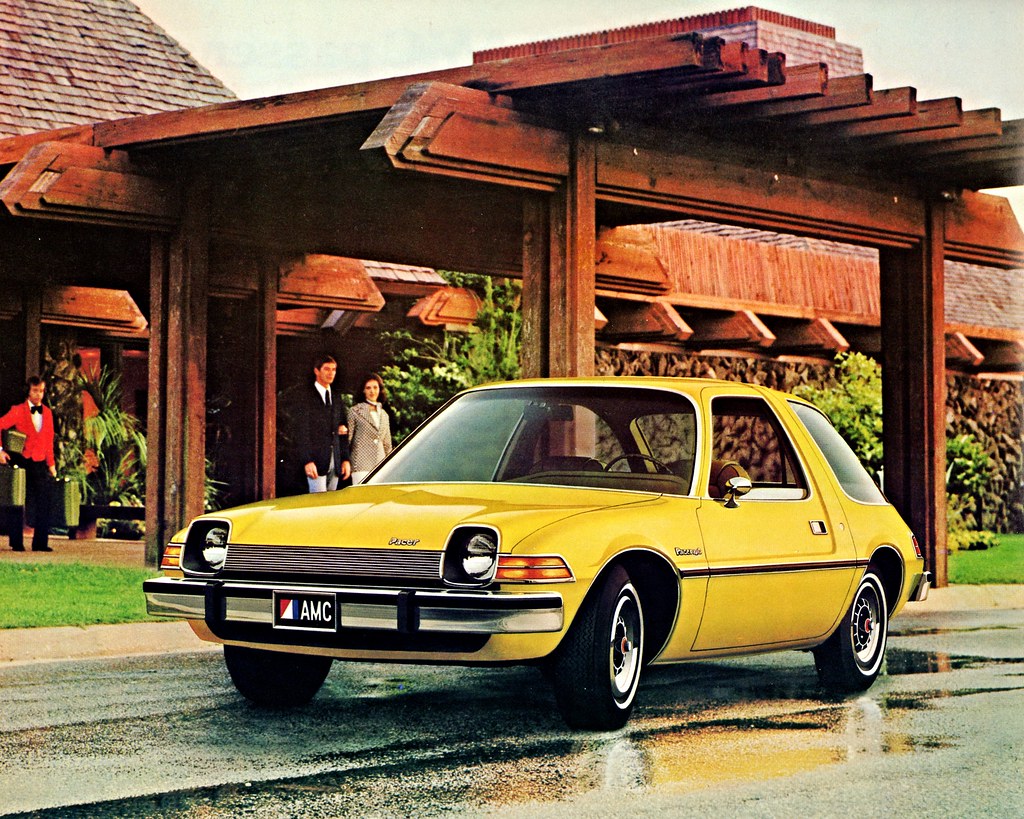
8. **The AMC Pacer’s Quirky Cool in “Wayne’s World”**Alright, party on! You know a car has truly made it when it becomes a global phenomenon for a scene that literally involves headbanging to Queen. The AMC Pacer, with its distinctive bubble windows and chunky design, was never exactly hailed as “cool” in the traditional sense. It was more of an automotive oddball, a compact car that dared to be different.
But then came “Wayne’s World,” and everything changed for this little blue wonder. Mike Myers’ Wayne Campbell and Dana Carvey’s Garth Algar, two of Hollywood’s most beloved slackers, transformed the Pacer into a legendary cult classic. That iconic “Bohemian Rhapsody” scene, where Wayne and Garth rock out while cruising, etched the car into pop culture history. Suddenly, its funky shape and unique look were the height of retro chic, a testament to the film’s offbeat humor.
The Pacer’s unexpected stardom was a perfect match for the film’s irreverent humor. It wasn’t about raw speed or sleek styling; it was about pure personality and nostalgia. This humble, often-mocked car became a symbol of underdog charm, proving you don’t need to be flashy to be utterly memorable. Seeing a blue Pacer today is guaranteed to draw smiles and inspire singalongs, proving that even the most unusual vehicles can become biggest stars, especially with comedic genius and a killer soundtrack. Excellent!
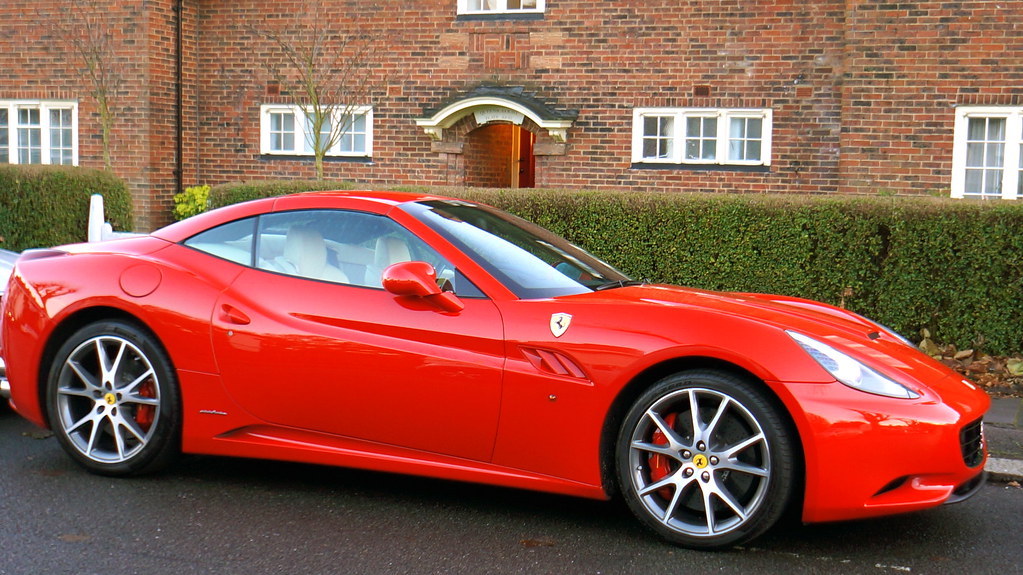
9. **Mr. Frye’s Ferrari California in “Ferris Bueller’s Day Off”**Okay, prepare to feel a pang of cinematic pain for a moment. In “Ferris Bueller’s Day Off,” the 1961 Ferrari 250GT California Spyder wasn’t just a car; it was a character, a symbol of ultimate freedom and, for Cameron Frye, a source of paralyzing anxiety. Cameron famously explains that fewer than a hundred of these beauties were ever made, immediately establishing its incredible rarity and immense value. It wasn’t just cool; it was the *epitome* of cool, a dream machine central to the rebellious antics of Ferris.
The sheer audacity of Ferris convincing Cameron (Alan Ruck) to “borrow” his dad’s prized possession for a joyride through Chicago made this Ferrari an instant legend. While the cars used were convincing replicas (because smashing a real one would be heartbreaking!), their on-screen presence was powerful. The film perfectly captured the allure of this magnificent vehicle, turning it into a stand-in for youthful escapism and the thrill of living life to the fullest.
The emotional journey of the Ferrari throughout the film, from its pristine garage to its infamous plunge, makes it one of the most unforgettable vehicles. It highlights how a car can transcend its mechanical nature to become a focal point for character development and plot progression, all while delivering laugh-out-loud comedic moments. Real 1961 Ferrari 250GT California Spyders are among the most valuable cars in the world, and their cinematic portrayal only amplified their legend, proving that even a replica can leave an indelible mark in a perfectly choreographed comedic caper.
Car Model Information: 2022 Lincoln Aviator Reserve AWD
Name: Ferrari 250
Caption: 1962 Ferrari 250 GT/E
Manufacturer: Ferrari
Production: 1952–1964
Designer: Giotto Bizzarrini,Scaglietti,Pinin Farina,Vignale,Ghia
Class: Grand Tourer
BodyStyle: Berlinetta,cabriolet,coupé
Layout: Longitudinal engine,Front-engine, rear-wheel-drive layout
Engine: Ferrari Colombo engine,V12 engine
Transmission: Manual transmission
Wheelbase: 2400 mm
Abbr: on (Europa)
Predecessor: Ferrari 212 Inter
Successor: Ferrari 275
Categories: 1950s cars, 1960s cars, 24 Hours of Le Mans race cars, Articles with short description, Commons category link is on Wikidata
Summary: The Ferrari 250 is a series of sports cars and grand tourers built by Ferrari from 1952 to 1964. The company’s most successful early line, the 250 series includes many variants designed for road use or sports car racing. 250 series cars are characterized by their use of a 3.0 L (2,953 cc) Colombo V12 engine designed by Gioacchino Colombo. The 250 series designation refers to this engine’s cylinder displacement of approximately 250 cc. They were replaced by the 275 and 330 series cars.
Get more information about: Ferrari 250
Buying a high-performing used car >>>
Brand: Ferrari Model: 250GT California Spyder
Price: $39,000 Mileage: 66,933 mi.

10. **The Mystery Machine in “Scooby-Doo, Where Are You!”**Zoinks! If you grew up watching Saturday morning cartoons, you absolutely know and love The Mystery Machine. This groovy van, first rolling onto screens in “Scooby-Doo, Where Are You!” in 1969, wasn’t just a mode of transport for Fred, Daphne, Velma, Shaggy, and Scooby-Doo; it was an integral member of Mystery Inc. A vibrant, psychedelic masterpiece, it perfectly captured the free-spirited vibe of the late ’60s and early ’70s, instantly becoming an icon of animation and pop culture.
With its unmistakable paint job featuring green, orange, and blue swirls, and iconic orange flowers, The Mystery Machine was a mobile declaration of adventure. While vaguely reminiscent of the era’s popular VW Buses, it was something entirely its own – a custom-designed, one-of-a-kind vehicle that housed everything a budding detective crew could need. From secret compartments to hidden gadgets, it was the ultimate base of operations for solving spooky, often hilarious, mysteries.
The van’s unique aesthetic mirrored the quirky, lighthearted, and often slapstick humor of the show. It was the backdrop for countless chase scenes, a safe haven during terrifying encounters, and the cozy spot for Shaggy and Scooby to devour food. Its vibrant presence and consistent role solidified its status as a beloved character, making it one of the most recognizable vehicles from any animated series. To this day, The Mystery Machine remains a symbol of friendship, adventure, and the enduring appeal of a good, old-fashioned mystery with a comedic twist. Jinkies, what a ride!
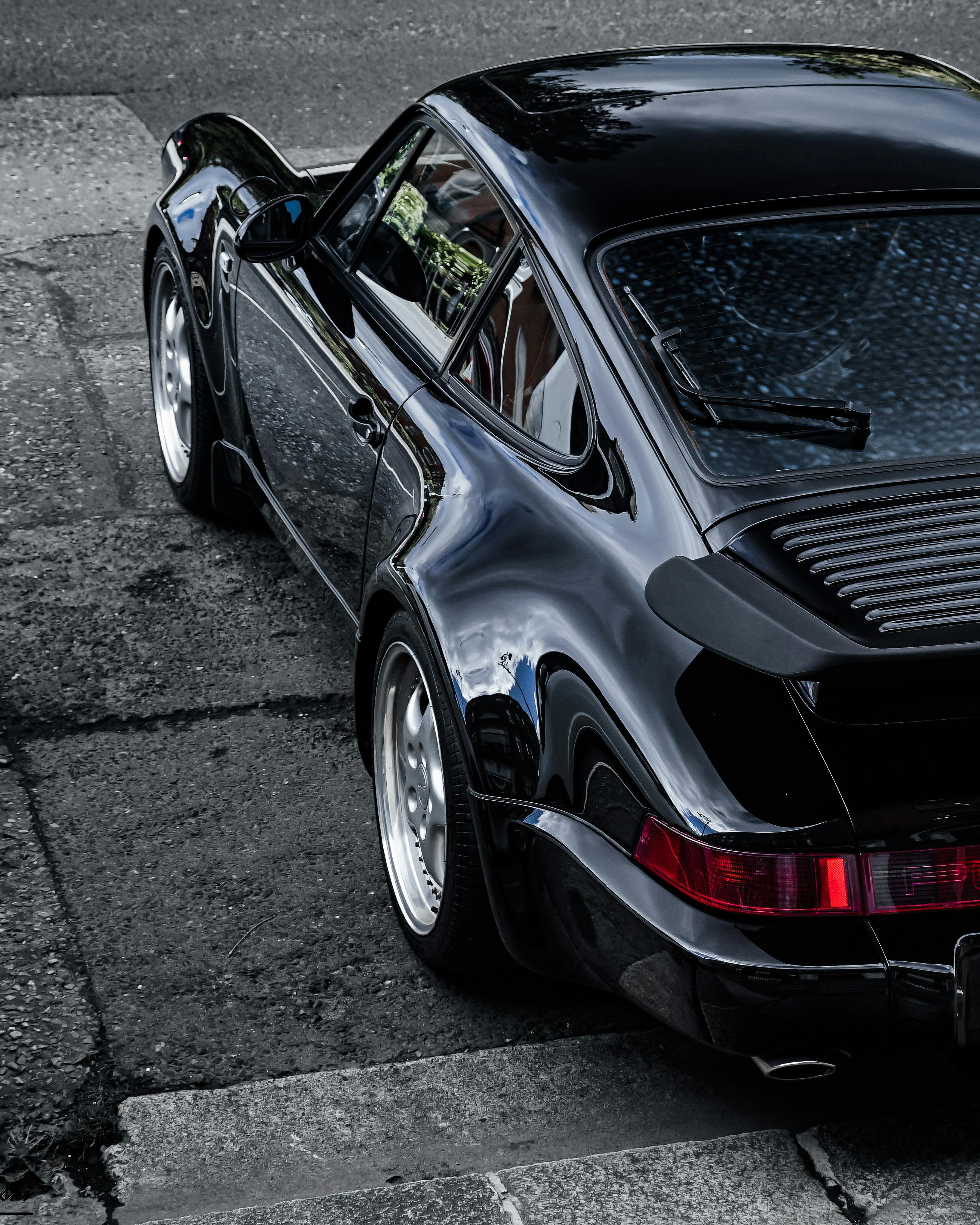
11. **The Bad Boys’ Porsche 964**When you’re wisecracking, high-octane Miami detectives like Mike Lowrey (Will Smith) and Marcus Burnett (Martin Lawrence), you need a ride that’s as fast, flashy, and unforgettable as your comedic banter. Enter the sleek, silver Porsche 964 in the original “Bad Boys.” This wasn’t just any sports car; it was a character in itself, perfectly embodying the film’s blend of explosive action, sharp wit, and undeniable style. For many, it immediately became the benchmark for what a cool cop car should be.
What makes this Porsche even cooler is its backstory: it was actually owned by none other than the film’s director, Michael Bay, who lent it to the production. The 964, with its elegant lines and formidable performance, was instrumental in some of the film’s most memorable and jaw-dropping chase sequences. It wasn’t just about getting from point A to point B; it was about doing it with unparalleled flair, a screech of tires, and a whole lot of hilarious bickering between Smith and Lawrence.
The chemistry between the two lead actors, combined with the sheer power and presence of the Porsche, created an unforgettable on-screen duo. The car became synonymous with their unique brand of action-comedy, embodying their youthful energy and rebellious spirit. Decades later, the Bad Boys franchise has grown, and with it, the legend of that original Porsche 964. The car itself, after being sold by Bay, fetched over a million dollars, a testament to its enduring iconic status, proving the coolest rides come with explosive laughs and incredible stunts.
Car Model Information: 1986 Porsche 911 Cabriolet
Name: Porsche 964
Caption: Porsche 911 Turbo 3.3 (964)
Aka: Porsche Carrera
Manufacturer: Porsche
Class: Sports car
Layout: RR layout,R4 layout
Production: 1989–December 1993 , 63,762 built
Related: Ruf RCT
Predecessor: Porsche 911 (classic),Porsche 911 (930)
Successor: Porsche 993
BodyStyle: coupé
Engine: ubl
Wheelbase: 2270 mm
Abbr: on
Length: 4275 mm
Width: convert
Height: convert
Transmission: Tiptronic,Automatic transmission
Assembly: Baden-Württemberg,Stuttgart
Designer: Benjamin Dimson (1985, 1986)
Categories: 1990s cars, All-wheel-drive vehicles, All Wikipedia articles needing clarification, Articles with short description, CS1 maint: archived copy as title
Summary: The Porsche 964 is a model of the Porsche 911 sports car manufactured and sold between 1989 and 1994. Designed by Benjamin Dimson through January 1986, it featured significant styling revisions over previous 911 models, most prominently the more integrated bumpers. It was the first car to be offered with Porsche’s Tiptronic automatic transmission and all-wheel drive as options.
Get more information about: Porsche 911 (964)
Buying a high-performing used car >>>
Brand: Porsche Model: 964
Price: $79,980 Mileage: 23,922 mi.
Read more about: Beyond the Chrome: Unmasking 13 Car Driver Stereotypes That Are More Than Just Roadside Chatter
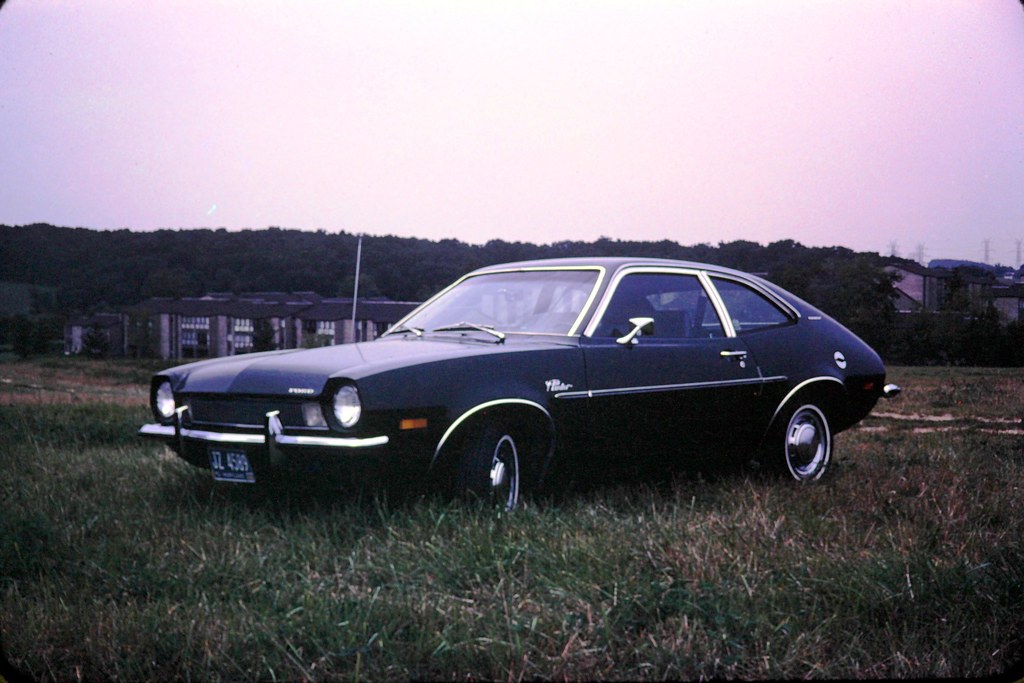
12. **The EM-50 Urban Assault Vehicle in “Stripes”**Forget sleek sports cars; sometimes, the most unforgettable movie vehicles are hilariously absurd. In “Stripes,” Bill Murray delivers with the EM-50 Urban Assault Vehicle. This wasn’t some factory-built military marvel; it was a seemingly innocuous, fully-equipped recreational vehicle, transformed into a heavily armored, weaponized behemoth. Talk about an unexpected upgrade!
The EM-50 is the ultimate underdog vehicle, initially a high-tech mobile command unit. But in the hands of misfits led by Bill Murray’s John Winger and Harold Ramis’ Russell Ziskey, it becomes a rolling fortress of comedic chaos. Its transformation into a machine “ready for war” is a central gag, perfectly encapsulating the movie’s satirical take on military life and the unexpected heroics of its unlikely protagonists. It’s a camper van that’s packing serious heat!
This vehicle isn’t fast or particularly stylish, but its sheer ridiculousness and formidable arsenal make it absolutely iconic. It’s the kind of vehicle only Bill Murray and his crew could commandeer, turning a sensitive military asset into a personal rescue mission in Czechoslovakia. The EM-50 embodies the film’s rebellious spirit and its commitment to making us laugh, even when stakes are surprisingly high. So, who’s up for a joyride to rescue their big toe?

13. **Pickford’s 1970 Pontiac GTO in “Dazed and Confused”**Alright, class of ’76, let’s take a trip back to the most epic last day of school ever! “Dazed and Confused” is an absolute treasure trove of classic 70s cars, each one a character in its own right. While many might think of Wooderson’s Chevy Chevelle SS, there’s another ride that just screams “cool” from the first frame: Pickford’s (Shawn Andrews) 1970 Pontiac GTO. When those opening notes of “Sweet Emotion” kick in and you see that GTO cruising, you know you’re in for a good time.
The 1970 Pontiac GTO was a definitive muscle car of its era, known for its powerful engine and aggressive styling. In “Dazed and Confused,” Pickford’s GTO isn’t just a background prop; it’s a vibrant slice of Americana, perfectly embodying the freedom, attitude, and cruising culture of the mid-70s. Its presence immediately sets the tone for the film, introducing us to a world where cars are extensions of personality, platforms for hanging out, and mobile stages for teenage drama and comedic antics.
What truly makes this GTO stand out is its subtle but persistent presence throughout the night’s events. It’s the kind of car every teenager of that generation dreamed of owning, a symbol of power and independence. The film captures how cars facilitated social interactions, turning this impressive muscle car into a beloved cultural artifact, deeply intertwined with the film’s comedic and nostalgic narrative. The GTO’s role solidifies its place not just as a great American muscle car, but as a cinematic icon, reminding us of a simpler time.
Car Model Information: 1966 Pontiac GTO Coupe
Name: Pontiac GTO
Caption: 2005 Pontiac GTO
Manufacturer: Pontiac (automobile),Holden
Class: Mid-size car,Compact car,Mid-size car
Production: 1963–1974,2003–2006
Predecessor: Pontiac Tempest
Layout: Front-engine, rear-wheel-drive layout
ModelYears: 1964-1974 2004-2006
Categories: 1970s cars, 2000s cars, All articles with unsourced statements, Articles with short description, Articles with unsourced statements from October 2008
Summary: The Pontiac GTO is a front-engine, rear-drive, two-door, and four-passenger automobile manufactured and marketed by the Pontiac division of General Motors over four generations from 1963 until 1974 in the United States — with a fifth generation made by GM’s Australian subsidiary, Holden, for the 2004 through 2006 model years.
The first generation of the GTO is credited with popularizing the muscle car market segment in the 1960s. Some consider the Pontiac GTO to have started the trend with all four domestic automakers offering a variety of competing models.
For the 1964 and 1965 model years, the GTO was an optional package on the intermediate-sized Pontiac LeMans. The 1964 GTO vehicle identification number (VIN) started with 22, while the 1965 GTO VIN began with 237. The GTO was designated as a separate Pontiac model from 1966 through 1971 (VIN 242…). It became an optional package again for the 1972 and 1973 intermediate LeMans. For 1974, the GTO was an optional trim package on the compact-sized Ventura.
The GTO model was revived for the 2004 through 2006 model years as a captive import for Pontiac, a left-hand drive version of the Holden Monaro, itself a coupé variant of the Holden Commodore.
Get more information about: Pontiac GTO
Buying a high-performing used car >>>
Brand: Pontiac Model: GTO
Price: $59,991 Mileage: 4,408 mi.

14. **Starsky And Hutch’s 1976 Ford Gran Torino**If you’re looking for the ultimate embodiment of 70s cop show cool, look no further than the iconic “striped tomato”: Starsky and Hutch’s 1976 Ford Gran Torino. This isn’t a car with hidden machine guns or an ejection seat; it’s just pure, unadulterated cool. The moment this bright red Gran Torino, with its unmistakable white vector stripe, screeched onto screens, it became an instant legend, synonymous with high-speed chases and buddy-cop antics, driven by Paul Michael Glaser’s Starsky and David Soul’s Hutch..
The Gran Torino’s bold paint job and distinctive stripe made it instantly recognizable, turning a standard production car into a superstar. It served as a trusty sidekick to the detective duo, always ready to power through a dramatic turn or leap over an obstacle. The car’s frequent appearances in exhilarating chase scenes cemented its place in television history, making it as much a character in the show as its human stars. The chemistry between the car and its drivers added immeasurably to the show’s appeal.
What truly made the Gran Torino a comedic and action-packed icon was its understated reliability mixed with its flashy appearance. It was a no-nonsense workhorse for fighting crime, yet its vibrant aesthetic added a touch of flair and fun to every episode. Fans in the 70s famously debated whether they wanted to be Starsky or Hutch, but everyone agreed on one thing: they all wanted to drive that Gran Torino. Decades later, its TV fame ensures it still draws crowds, proving that simple, recognizable designs can become enduring legends, especially when paired with a dynamic duo and a whole lot of 70s cool.
Car Model Information: 2024 BMW X5 sDrive40i
Aka: Ford Fairlane (Venezuela)
Name: Ford Torino
Caption: 1970 Ford Torino Cobra SportsRoof
Manufacturer: Ford Motor Company
Production: 1968–1976
Class: Mid-size car,muscle car
Layout: FR layout
Related: Mercury Montego
Assembly: ubl
Predecessor: Ford Fairlane (Americas)
Successor: Ford LTD II
Categories: 1960s cars, 1970s cars, All Wikipedia articles written in American English, All articles with vague or ambiguous time, Articles with short description
Summary: The Ford Torino is an automobile that was produced by Ford for the North American market between 1968 and 1976. It was a competitor in the intermediate market segment and essentially a twin to the Mercury Montego line.
Just as the Ford LTD had been the upscale version of the Ford Galaxie, the Torino was initially an upscale variation of the intermediate-sized Ford Fairlane. In the 1968 and 1969 model years, the intermediate Ford line consisted of lower-trim Fairlanes and its subseries, the upper-trim Torino models. In 1970, Torino became the primary name for Ford’s intermediate, and the Fairlane was now a subseries of the Torino. In 1971, the Fairlane name was dropped altogether, and all Ford intermediates were called Torino.
Most Torinos were conventional cars, and generally the most popular models were the four-door sedans and two-door hardtops. However, Ford produced some high-performance “muscle car” versions of the Torino by fitting them with large powerful engines, such as the 428 cu in (7.0 L) and 429 cu in (7.0 L) “Cobra-Jet” engines. Ford also chose the Torino as the base for its NASCAR entrants, and it has a successful racing heritage.
Get more information about: Ford Torino
Buying a high-performing used car >>>
Brand: Ford Model: Gran Torino
Price: $37,758 Mileage: 39,959 mi.
These vehicles, much like the unforgettable comedians who drove them, remind us that the road to legend isn’t always paved with conventional glamor. Sometimes, it’s the quirky, the customized, or the just plain unusual rides that truly accelerate into our hearts and minds, leaving an exhaust trail of laughter and indelible memories. So next time you’re on a cinematic joyride, keep an eye out for these four-wheeled marvels – because in Hollywood, the funniest journeys often come in the most unexpected packages.


